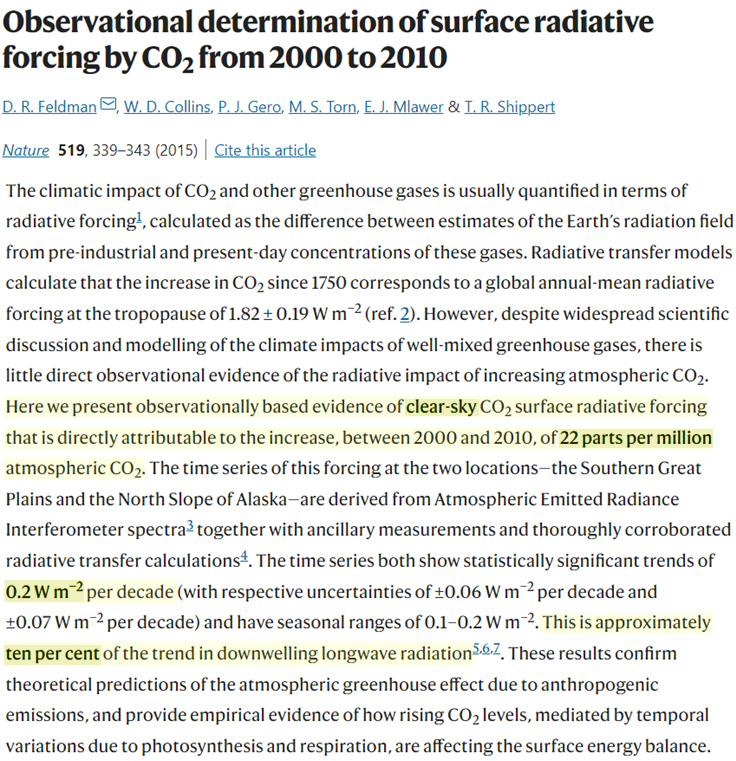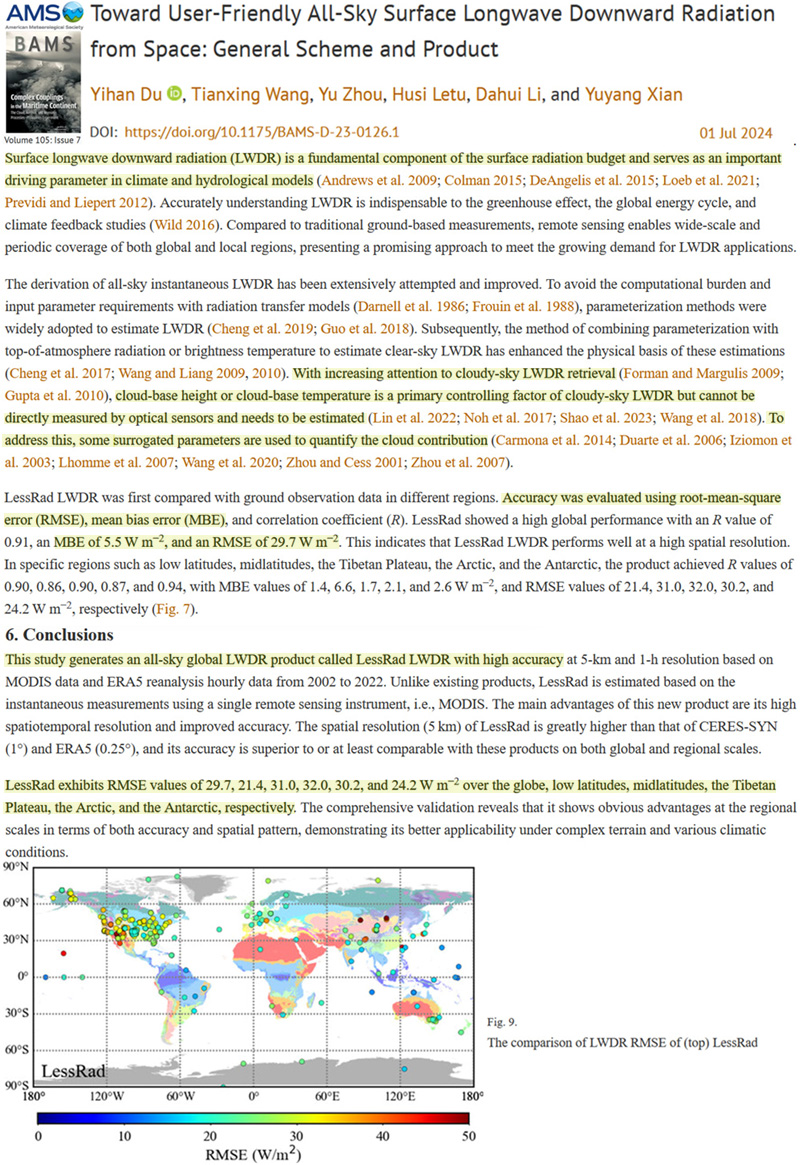When assessing the climate-altering effects of downwelling longwave radiation, the root mean square error associated with calculating this value is 29.7 W/m². For some reason, scientists characterize measurements with an observation error this large as “high accuracy”.
In an imaginary world where no clouds exist (clear-sky), the surface longwave downward radiation (LWDR) calculated for a CO2 increase of 22 ppm (2000-2010) has been assessed to be 0.2 W/m² (Feldman et al., 2015) per decade, or 0.02 W/m² per year. This value is acknowledged to contribute just 10 percent of the LWDR trend over this period. The other 90 percent is linked to clouds and water vapor.

Image Source: Feldman et al., 2015
The root mean square error statistical value is defined in engineering as “the measure of the differences between values that are predicted by a model and values that are actually observed.” In other words, it’s the difference between what is expected to occur using simulated model inputs and what, in reality, occurs.
Climate modeling error in assessing LWDR is quite large. This is due primarily to the inability of the models to accurately assess the all-sky conditions occurring in the real world, where clouds exist.
Scientists acknowledge clouds are the principal “controlling factor” of LWDR trends, and yet their impacts “cannot be directly measured” (Du et al., 2024). Instead, they must be estimated using surrogate constructs with simulated values. Consequently, the real-world, all-sky atmosphere cannot be assessed with sufficient accuracy.
“With increasing attention to cloudy-sky LWDR retrieval, cloud-base height or cloud-base temperature is a primary controlling factor of cloudy-sky LWDR but cannot be directly measured by optical sensors and need to be estimated. To address this, some surrogate parameters are used to quantify the cloud contribution.”
Despite these fatal flaws, climate scientists eager to attribute climate forcing to human activity literally characterize measurements with observation error 150 times larger (~30 W/m²) than 10 years of CO2 forcing (0.2 W/m²) as “high accuracy.”
“This study generates an all-sky global LWDR product called LessRad LWDR with high accuracy.”
“Accuracy was evaluated using root-mean-square-error (RMSE), mean bias error (MBE) … an MBE of 5.5 W/m², and a RMSE of 29.7 W/m².”
“LessRad exhibits RMSE values of 29.7, 21.4, 31.0, 32.0, and 24.2 W/m² over the globe, low latitudes, midlatitudes, the Tibetan Plateau, the Arctic, and the Antarctic, respectively.”
Proponents of anthropogenic global warming (AGW) claim CO2’s LWDR forcing is the factor driving modern climate change. However, if the CO2 forcing contribution to LWDR is 150 times smaller than the error in calculating the surface background LWDR, then there can be no valid attribution assessment for CO2 forcing in LWDR trends.






Recent Comments